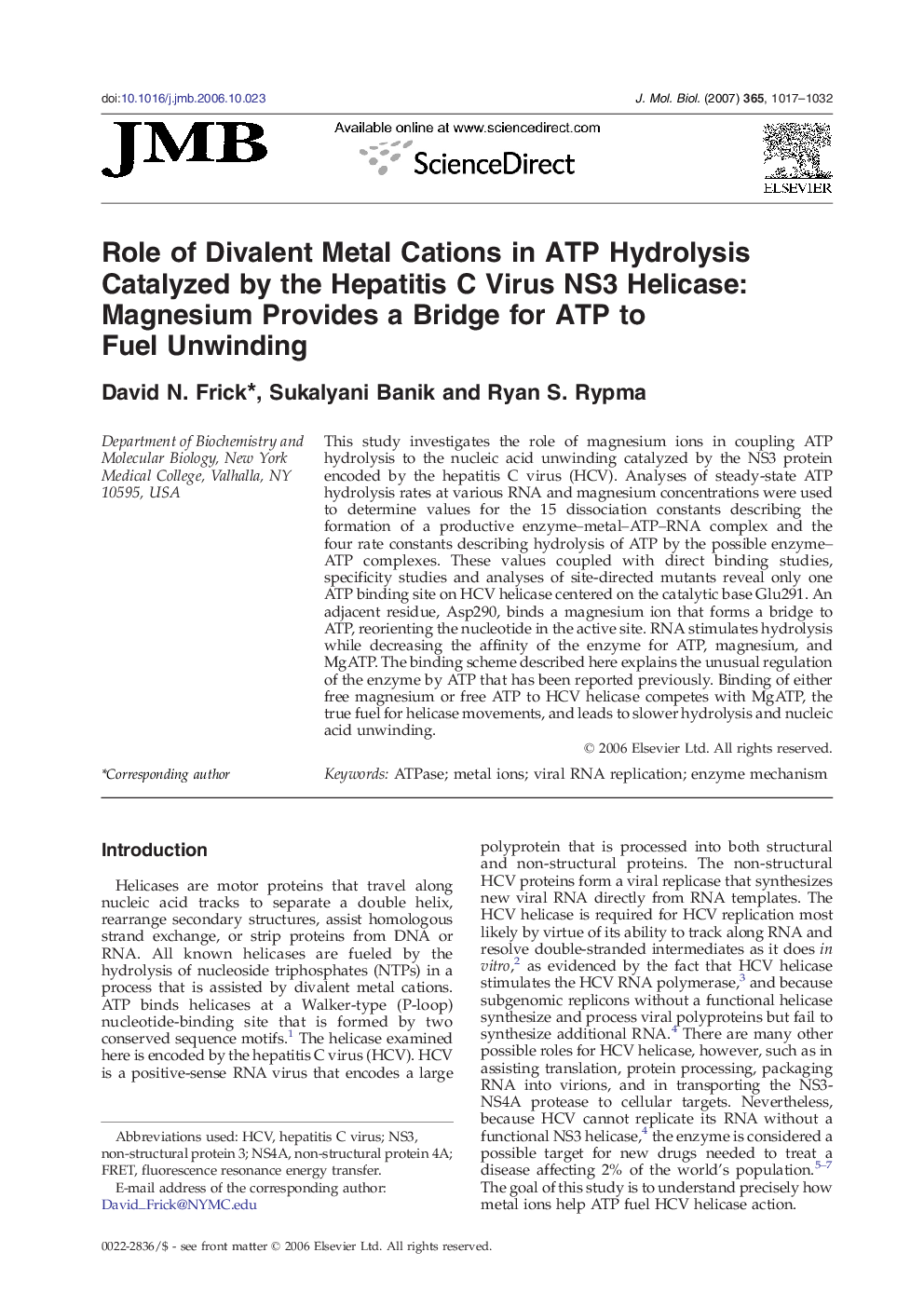| کد مقاله | کد نشریه | سال انتشار | مقاله انگلیسی | نسخه تمام متن |
|---|---|---|---|---|
| 2188921 | 1096190 | 2007 | 16 صفحه PDF | دانلود رایگان |

This study investigates the role of magnesium ions in coupling ATP hydrolysis to the nucleic acid unwinding catalyzed by the NS3 protein encoded by the hepatitis C virus (HCV). Analyses of steady-state ATP hydrolysis rates at various RNA and magnesium concentrations were used to determine values for the 15 dissociation constants describing the formation of a productive enzyme–metal–ATP–RNA complex and the four rate constants describing hydrolysis of ATP by the possible enzyme–ATP complexes. These values coupled with direct binding studies, specificity studies and analyses of site-directed mutants reveal only one ATP binding site on HCV helicase centered on the catalytic base Glu291. An adjacent residue, Asp290, binds a magnesium ion that forms a bridge to ATP, reorienting the nucleotide in the active site. RNA stimulates hydrolysis while decreasing the affinity of the enzyme for ATP, magnesium, and MgATP. The binding scheme described here explains the unusual regulation of the enzyme by ATP that has been reported previously. Binding of either free magnesium or free ATP to HCV helicase competes with MgATP, the true fuel for helicase movements, and leads to slower hydrolysis and nucleic acid unwinding.
Journal: Journal of Molecular Biology - Volume 365, Issue 4, 26 January 2007, Pages 1017–1032